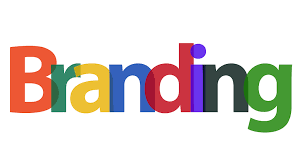Cancer is a devastating disease that affects millions of people around the world. While there has been significant progress in cancer treatment over the past few decades, there is still much room for improvement. One promising new development in cancer treatment is the oncology care model. The EOM is a new way of delivering cancer care that focuses on providing patients with the best possible care while also reducing costs. With the new EOM model coming into place, let’s discuss the three reasons why you should participate in this new way of cancer care.
What is the Oncology Care Model?
An oncology care model is a new approach to cancer care that is currently being piloted by the Centers for Medicare and Medicaid Services. The oncology care model is a patient-centered, team-based approach to cancer care that is designed to reduce costs and improve patient care. The model is based on the premise that by working together, the care team can provide the best possible care for each patient, which in turn will create better functioning systems and improved clinical outcomes. Additionally, it will also help you to learn the top things about the radiation oncology model so that you can make a more informed decision. Remember that as a provider, you always have the ability to opt out of any program or model at any time.
Why Should You Participate in The Oncology Care Model?
1. Driving Existing Patient-Centered Care Goals
The oncology care model offers a great opportunity to drive and grow existing patient-centered care goals. This is because the model is based on the premise of providing patients with the best possible care as well as improving the cancer experience for both the patient and the care team. It aligns with a number of other oncology certifications and accreditations, which makes it an ideal umbrella program for a health system to adopt. With the help of tools such as shared decision-making, ePROs, comprehensive care plans, and patient navigators, the oncology care model has the potential to not only improve patient satisfaction but also provide the care team with the information they need to make the best decisions for each patient.
2. Promoting System-Level Changes
The oncology care model has the potential to promote system-level changes that can improve care for all cancer patients. The model’s emphasis on health equity and reducing health disparities is particularly relevant in oncology, where significant disparities still exist. EOM will have the flexibility to use waivers and other tools to address social needs and reduce barriers to care. Additionally, the oncology care model is designed to promote communication and collaboration between all members of the care team, which can lead to improved care coordination and continuity of care.
3. Access to Robust Data
Another major appeal of this model is the access to valuable claims data. It will let practices have visibility into the patient’s care journey, which could be crucial in understanding how to better manage the whole patient. Patient trends, referral patterns, and resource utilization information will allow practices to be proactive in driving their practice toward improved outcomes. Basically, using this data, practices will have a clear understanding of what is and isn’t working, which could be highly beneficial.
To Conclude
EOM has the potential to be a great new development in cancer care. It is a patient-centered, team-based approach that has the goal of providing the best possible care to oncology care model participants. So, if you’re a provider, we highly encourage you to look into this model and decide if it’s something that could work for you and your practice. Thanks for reading!




